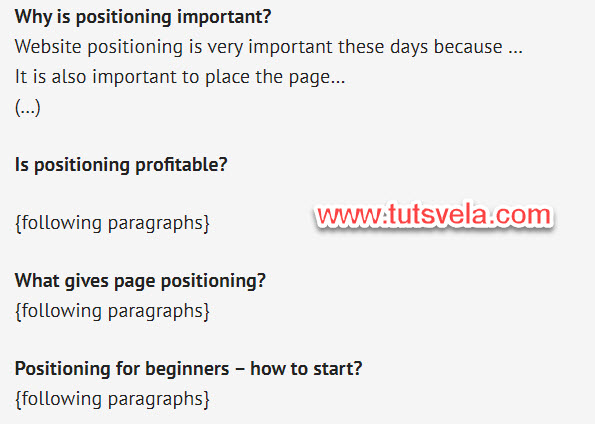When you are preparing a blog entry, first make sure the content is interesting and capturing.
And do you remember to optimize your blog for SEO?
You might think that this requires specialized knowledge and is simply too complicated for you. Or do you think that this will not bring measurable results?
Let me dispel your doubts and say …
But First You Must read about 5 Best Blogging Platforms In 2023 to kick-start your Blogging Journey
What can you do to Optimize Your Blog For SEO?
As a rule, your texts are distributed only to ordinary readers of your blog or those who follow you on SM. However, if you take care of the proper positioning and optimization of SEO, you will have a better chance of winning new customers. A well-prepared text will be highly appreciated by search engines, so if your potential recipient finds it, and then is interested in the content, it will certainly return to your blog anyway.
And most importantly, recording optimization is not “black magic”. Many tools help this process of the blogger (and not only), so it is simple and takes only a few minutes. Sounds good, right? So, now there is some information that will allow you to quickly and easily optimize your texts.
Input subject
You know you want to write, but you don’t have enough title for the entry?
In this situation, it is worth finding out what phrases are typed in the search engines of Internet users and choose on this basis. Thus, there is a chance that someone will get to your post.
They will help you with this:
Answer The Public and Ubersuggest. Just enter the main phrase under which you are editing your article (for example, “positioning”), select the country as “PL / Poland” and you will get a pretty good list of offers. Based on this information, you can choose a message subject, for example, “Why is positioning important?”
In this post, it’s worth adding some additional phrases, as well as optimizing them on the angle. You can also use the following options:
- Is positioning profitable?
- What gives page positioning?
- Positioning for beginners

Google Display Tags
For search engines, the most important tags in the page code are:
<Title> … </ title><meta name = “description” content = “…” />Fortunately, you don’t need to know HTML to cope with the optimization of these tags – all the popular blog platforms give you the ability to set your content. They can be called in different ways, for example:
- title, title, SEO title, the title for search engines,
- description, description, description of SEO, description for search engines, meta description, meta description.
Optimize your blog title
Since the name also takes part in positioning the message, it is worth optimizing it. The name should contain as many keywords as possible – preferably in unmodified form, but with some very important rules:
- The name should be natural and understandable to the user.
- The length of the title should not exceed +/- 65 characters with spaces,
- Not spam – just replace the keywords after the decimal point to include as much as possible in the title,
- Because the title appears in search results, it’s important to make sure it looks attractive; Use uppercase and lowercase letters, clear selections, punctuation marks, etc.
- Do not use capitals for the title as a whole – Google does not allow such headings.
Optimize your blog description
The content of the description is not included, but it attracts the attention of the reader, so it should also be optimized. Try to encourage the reader to enter your blog. Keep in mind that Google displays approximately 150 characters, so it makes no sense to exceed this value. If you don’t know what your description will look like, you can always check it out: http://www.seomofo.com/snippet-optimizer.html.
Content optimization
Another important factor in optimizing your listing is taking care of the content of your blog, or rather, the saturation of its keywords. This is not difficult. If the text makes sense, keywords may appear in every sentence. Their excess, of course, does not interfere. As much as possible, try also starting with paragraphs and using them to formulate headings. A keyword hint is welcome.
Layout example:

Graphical optimization
All graphics or images that you add to the message must be properly optimized. This will speed up the loading of your site, which is important for users. Also, you can get new readers who will enter your blog using the Google search engine. To find your photos on a blog, you must follow a few rules:
- Image file name – must be simple and contain a keyword in it.
- ALT is an alternative description of a graphic image that is displayed to Google and the user when, for whatever reason, the graphic is not displayed on the page. You must add it to each image in each message.
- Image size is important because of the time it takes to load pages, which, in turn, affects its visibility in the search engine. You must choose the size of the graphics so that the page loads quickly on desktop and mobile devices.
- File format. Choose the image format and image that will be displayed on your blog best: .gif, .png, or jpeg.
Why optimize your blog?
Optimizing your listing is a very simple thing, and yet there are many advantages. With a few simple steps, you can get a lot of new readers. So why not start optimizing today? Or did you use the above advice?

